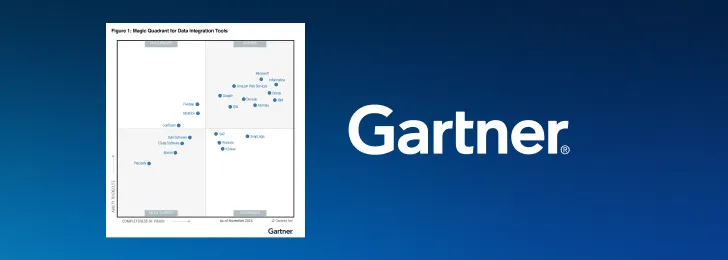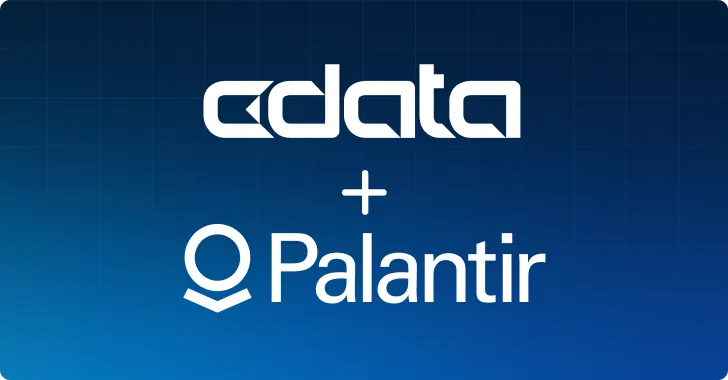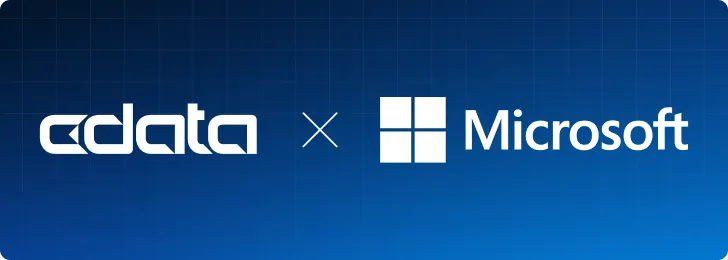
With data everywhere, often spread across different systems and applications, data warehousing is a common strategy for organizations looking to get the most value out of their data. But what happens to that data once it is transformed and stored. Do all the right users have access to this data? Is that data in a format that is usable for non-technical teams. What if the business systems, like customer relationship management or accounting solutions, need to be updated by data that's stored in the warehouse?
That's where reverse ETL (extract, transform, load) comes in.
In this article, we explore reverse ETL, its benefits, and how it can help businesses better harness data. We look at different reverse ETL providers available in the market and outline reverse ETL's potential to deliver more comprehensive insights into customer behavior and improve customer outcomes. This article provides an in-depth understanding of reverse ETL and how businesses can leverage it.
What is reverse ETL: An overview
Reverse ETL is a process that takes traditional data integration and turns it around. Unlike the conventional ETL sequence, which aggregates and combines data from different sources into a centralized data warehouse for analysis, reverse ETL takes the next critical step. It focuses on taking the processed and analyzed data from the warehouse and distributing it back to operational systems and business applications.
This cyclical flow of information ensures that the refined, enriched data doesn't remain siloed in the data warehouse but is instead actively deployed to enhance business operations. Reverse ETL makes the data warehouse a dynamic component of the operational ecosystem, rather than a static repository of information. It democratizes data access across the organization, allowing non-technical users to benefit from data-driven insights without needing to understand complex data querying languages. This not only accelerates decision-making processes but also fosters a culture of data literacy and empowers teams to take ownership of their data-driven initiatives.
ETL vs. reverse ETL: 7 differences
- Direction of data flow: ETL processes data in a direction from source systems to a centralized data warehouse or data lake. It's designed to aggregate and harmonize disparate data for analytical processing and insights. In contrast, reverse ETL moves data from the data warehouse or data lake back into operational systems and SaaS applications. It enables the use of processed and enriched data in day-to-day business operations.
- Purpose and use case: The primary purpose of ETL is to collect and consolidate data from various sources for analysis, reporting, and business intelligence. It serves analytical needs, helping organizations understand trends, performance, and opportunities. Meanwhile, reverse ETL focuses on operationalizing data insights by pushing data from the warehouse into business applications for real-time decision-making, personalized customer interactions, and operational efficiency.
- Data schema: ETL requires transformation of data into a schema that is optimized for reporting and analytics. This often involves denormalizing data or restructuring it into dimensional models to support fast querying. Reverse ETL must often re-map and sometimes re-normalize data to match the specific schemas of the target operational systems, which can vary widely based on the application's data model.
- Error handling: Error handling in ETL processes is often complex, as it must deal with issues arising from data quality, transformation logic, and integration failures from multiple source systems. While still needing to address errors, reverse ETL ensures that the synchronized data adheres to the target systems' constraints and triggers appropriate actions without causing disruptions in operational processes.
- Technical complexity: ETL processes can be highly complex, involving intricate transformation logic, data cleansing, and the handling of large volumes of data from disparate sources. While also complex, the challenge for reverse ETL lies in integrating with a potentially large and varied set of APIs for different business applications, each with its unique data requirements and limits.
- Integration points: Traditional ETL processes typically involve integrating with a variety of source systems, which could range from databases and file systems to cloud applications and IoT devices. Reverse ETL focuses on integrating with destination business applications such as CRMs, marketing automation platforms, customer support tools, and operational databases.
- Data freshness and latency: Data freshness can vary with ETL, with some processes running in real-time and others on a batch basis, often optimized for less frequent, large-scale data loads. With reverse ETL, there's a stronger emphasis on real-time or near-real-time data synchronization to ensure operational systems reflect the most current insights, requiring efficient and frequent data updates.
While ETL and reverse ETL serve complementary roles within the data lifecycle of an organization, they address different needs and challenges. ETL is about preparing and consolidating data for analysis, whereas reverse ETL is about activating that data in the service of business operations.
Understanding how reverse ETL works
The reverse ETL workflow can be dissected into four main components: Sources, models, syncs, and destinations.
- Sources: The source in a reverse ETL process refers to the data warehouse or data lake where the aggregated, cleaned, and transformed data is stored. It acts as the centralized repository of all data that the organization has collected and processed, ready to be utilized. As the starting point of reverse ETL, the source system is queried to extract the specific datasets required for various operational needs. This data is often already aggregated, cleaned, and transformed, making it ripe for operational use.
- Models: Models in the context of reverse ETL are essentially the SQL queries or data models that define and specify which data sets you want to synchronize with downstream tools. They determine the structure and subset of the data to be sent to each destination. These models transform the raw or processed data from the source into a format suitable for use in operational systems. This might involve additional aggregations, filtering, or transformations to ensure the data fits the use case requirements of the destination systems.
- Syncs: Syncs represent the mechanisms through which the modeled data is mapped and sent to the end destinations. This includes the logic for how data is matched to existing records in the destination, how new records are created, and how data updates are handled. They ensure that the right pieces of data are sent to the correct places in the correct format. Syncs also manage the frequency of data updates, which can range from real-time to scheduled batches, depending on the requirements of the destination system and the capabilities of the reverse ETL tool.
- Destinations: Destinations are the operational systems, SaaS applications, and tools where the data from the warehouse is needed. Common examples include CRMs like Salesforce, marketing automation platforms like HubSpot, customer support tools like Zendesk, and many others. Destinations use the synced data for various operational processes, such as personalizing customer interactions, updating sales records, automating marketing campaigns, or enhancing customer support responses. By receiving timely and relevant data from the warehouse, these systems can operate more effectively and provide value directly from the organization's analytical insights.
How they work together
The process begins with the source, where all organizational data is stored and maintained. Through models, this data is queried and transformed into the specific formats and subsets required for various operational needs. Syncs act as the conduits that map and transfer this data to the destinations, ensuring that each piece of data lands in the right place and in the right format.
Why should businesses use reverse ETL?
Businesses today generate, accumulate, clean, and analyze for insights. Traditionally, these insights have been used in business intelligence (BI) tools and by data teams. This conventional approach inherently locks these insights behind specialized tools and departments. As a result, actionable insights remain underutilized, accessible only to those with the skills to navigate complex BI landscapes.
Reverse ETL helps solve this challenge, fundamentally shifting how businesses leverage their data, ensuring that deep insights are not just confined to reports and dashboards but are actively driving operational excellence and customer engagement strategies. Here’s why businesses should consider integrating reverse ETL into their data strategy:
Personalized customer experiences
One of the most compelling reasons to use reverse ETL is the opportunity to deliver highly personalized customer experiences. By syncing enriched customer data and insights back into operational systems, such as CRMs, marketing platforms, and customer service tools, businesses can tailor their interactions based on a customer's behavior, preferences, and history.
Improved operational efficiency
Operational efficiency is critical for the success of any business, and reverse ETL can play a significant role in optimizing these processes. By making actionable data readily available across various business applications, teams can automate routine tasks, streamline workflows, and reduce manual data entry errors. This efficiency not only saves time but also ensures that decisions are made on the most current and comprehensive data available.
Data-driven decision making across the organization
Reverse ETL democratizes access to data insights, breaking down the barriers that typically restrict data usage to analysts and data scientists. By integrating insights into the operational tools used by teams across the organization, reverse ETL enables a culture of data-driven decision-making. Organization-wide access to data empowers teams to make informed decisions quickly, fostering agility and innovation.
Competitive advantage
In today's fast-paced business environment, having a competitive edge is crucial. Companies that successfully implement reverse ETL can move more swiftly, adapting to market changes and customer needs with agility that competitors may lack. The ability to act on insights quickly, to personalize customer interactions at scale, and to operate efficiently can differentiate a business in crowded markets.
Reverse ETL use cases
- Sales insights: Reverse ETL can enrich CRM platforms with comprehensive, up-to-date customer profiles by syncing data from the data warehouse directly into sales tools. Sales teams gain access to a 360-degree view of customer interactions, purchase history, and behavior patterns. Enhanced insights lead to more informed sales strategies, ultimately boosting conversion rates and customer lifetime value.
- Lifecycle marketing: Lifecycle marketing involves syncing detailed customer segments and behavior data into marketing automation platforms to inform and automate the customer journey. Marketing teams can create highly targeted campaigns that deliver the right message at the right time. This level of customization enhances customer experiences, increases engagement, and drives higher conversion rates through more relevant and timely interactions.
- Personalized customer engagement: By using reverse ETL to integrate data warehouse insights into customer support and engagement tools, businesses can offer highly personalized customer experiences. Support teams have immediate access to a customer's history, preferences, and recent interactions across all channels. This enables them to provide tailored support and recommendations, improving resolution times and customer satisfaction.
- Product feedback loop: Integrating user behavior and feedback data from the data warehouse into product management tools can inform development priorities and enhancements. This direct line of insight into customer usage patterns and feedback enables teams to prioritize product updates and new features that directly address user needs, improving product-market fit and driving innovation.
- Financial forecasting and planning: Syncing up-to-date sales, marketing, and customer success metrics back into financial planning tools informs more accurate forecasts and resource allocation. This ensures that strategic decisions are grounded in the latest business performance data, leading to more responsive and adaptive financial planning.
Reverse ETL empowers all corners of a business to make smarter, data-driven decisions, fostering a more agile and customer-focused organization.
5 reverse ETL tools
As we've stated, reverse ETL tools play enable businesses to operationalize their data warehouse content by syncing it to various operational tools and systems. Here's an overview of some notable reverse ETL tools:
- CData Sync: CData Sync provides a straightforward and powerful solution for automating data flows from any source to any destination. While it encompasses broader data integration capabilities, it includes reverse ETL functionality, allowing businesses to sync their warehouse data to external systems and applications like Salesforce.
- Hightouch: Hightouch is a prominent player in the reverse ETL market, offering capabilities to sync data from your data warehouse directly into various SaaS tools and custom databases. It supports a wide range of destinations, from CRMs to marketing platforms, enabling businesses to leverage their data warehouse for operational workflows.
- Census: Census is another leading reverse ETL solution that specializes in operational analytics. It allows companies to use their warehouse as a central hub for customer data and sync this information to business apps, ensuring teams have access to the most relevant and up-to-date data for decision-making.
- Segment: Segment is traditionally known as a customer data platform (CDP) that collects, cleans, and controls customer data. With its recent advancements, it also offers reverse ETL capabilities, enabling businesses to take action on their data by syncing it from the warehouse back into various marketing, sales, and customer service tools.
- Fivetran: Initially renowned for its data integration and ETL services, Fivetran has expanded its offerings to include reverse ETL functionalities. This allows businesses to not only consolidate their data sources into a single warehouse but also to leverage that consolidated data across their operational systems, enhancing real-time decision-making and personalization.
Reverse ETL with CData Sync
Download a free, 30-day trial of CData Sync and start moving data from SQL Server and Snowflake into Salesforce to operationalize your warehouse data today.
Join our CData Community to take the next step in your data journey, gathering with like-minded data experts and professionals!
Explore CData Sync
Take a product tour today to learn how CData Sync can help you make the most of your Salesforce data.





